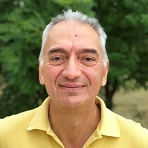Selected Papers from the 9th Greek Conference of Biochemistry and Physiology of Exercise
A special issue of Sports (ISSN 2075-4663).
Deadline for manuscript submissions: closed (31 May 2020) | Viewed by 37417
Special Issue Editor
Interests: exercise biochemistry and physiology; exercise metabolomics; sport nutrition
Special Issues, Collections and Topics in MDPI journals
Special Issue Information
Dear Colleagues,
Exercise biochemistry and physiology is a very active field of scientific endeavor which, over the past half-century, has contributed immensely to understanding alters the way our bodies (and those of other animals) function. The Hellenic Society of Biochemistry and Physiology of Exercise is celebrating its 9th annual conference (to be held at Capsis Hotel, Thessaloniki, Greece, October 18 to 20, 2019) with a Special Issue in Sports. As in previous years, the conference aspires to become an important researchers, students, and other scholars in sport science from Greece and other countries meet, present their findings, exchange ideas, and network with peers.
The Special Issue “Selected Papers from the 9th Greek Conference of Biochemistry and Physiology of Exercise” will bring together outstanding research in the following areas:
- Exercise biochemistry and molecular biology;
- Exercise physiology;
- Applications of training in sports;
- Clinical exercise physiology and health;
- Sport nutrition.
Authors who will present their original research either orally or in the form of a poster are invited to submit it as a full paper for publication in the Special Issue. Submission will open right after the conference (October 21, 2019) and will close on January 31, 2020. Manuscripts will undergo the regular peer-review process of the journal. Sports has agreed with the Hellenic Society of Biochemistry and Physiology of Exercise to offer the following extremely favorable article processing charges (APC) after acceptance:
- 175 CHF (Swiss Francs) to the 9 papers that will receive top rankings from the conference scientific committee. That’s an 82.5% discount over the APC of 1000 CHF that will apply after June 30, 2019.
- 800 CHF for all other papers (a 20% discount).
We are looking forward to receiving your work!
Prof. Vassilis Mougios
Guest Editor
Manuscript Submission Information
Manuscripts should be submitted online at www.mdpi.com by registering and logging in to this website. Once you are registered, click here to go to the submission form. Manuscripts can be submitted until the deadline. All submissions that pass pre-check are peer-reviewed. Accepted papers will be published continuously in the journal (as soon as accepted) and will be listed together on the special issue website. Research articles, review articles as well as short communications are invited. For planned papers, a title and short abstract (about 100 words) can be sent to the Editorial Office for announcement on this website.
Submitted manuscripts should not have been published previously, nor be under consideration for publication elsewhere (except conference proceedings papers). All manuscripts are thoroughly refereed through a single-blind peer-review process. A guide for authors and other relevant information for submission of manuscripts is available on the Instructions for Authors page. Sports is an international peer-reviewed open access monthly journal published by MDPI.
Please visit the Instructions for Authors page before submitting a manuscript. The Article Processing Charge (APC) for publication in this open access journal is 1800 CHF (Swiss Francs). Submitted papers should be well formatted and use good English. Authors may use MDPI's English editing service prior to publication or during author revisions.
Keywords
- exercise biochemistry
- exercise physiology
- exercise for health
- molecular biology of exercise
- clinical exercise physiology
- training
- sport nutrition







